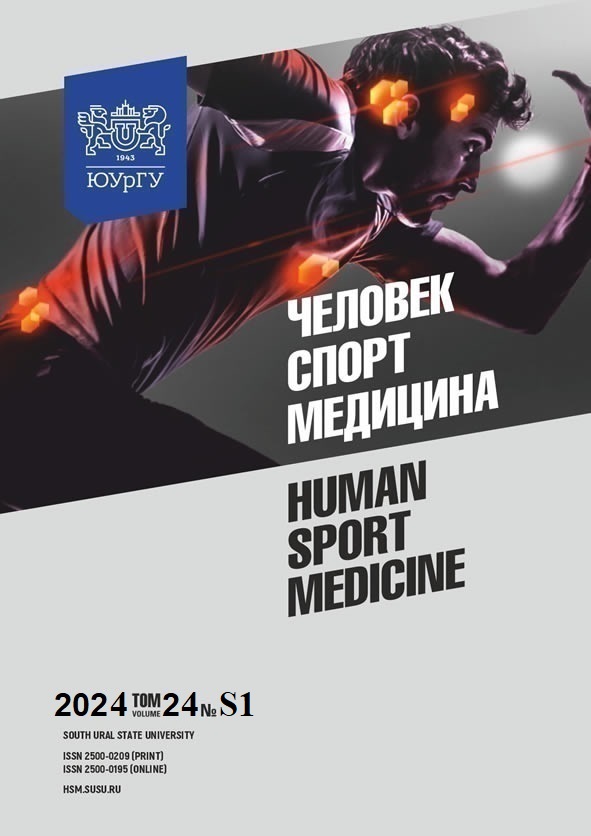FUNCTIONAL MODEL OF LUNGES FOR PROFESSIONAL VOLLEYBALL PLAYERS
Abstract
Aim. The objective of this study is to construct a biomechanical model of lunges in professional volleyball athletes to evaluate the functionality of the ankle joint. Materials and methods. The study participants comprised professional volleyball players aged 14 to 18 years and non-athletes aged 18 to 23 years, serving as the control group. Informed consent was obtained from all participants who were appraised of the testing process. The biomechanical model was developed using the Vicon Nexus program, with reflective markers placed at key points of the ankle joint. Movement amplitude in the ankle joint was recorded using six Vicon MX cameras. Results. The professional volleyball athletes exhibited a broader range of motion in the ankle joint during dorsiflexion compared to the control group. The eccentric contraction of the plantar flexor muscles of the ankle joint may contribute to a reduction in supportive force when the forefoot approaches the ground at a larger angle, as opposed to a smaller angle. Conclusions. Our findings suggest that professional volleyball athletes use the ankle joint more effectively, a phenomenon potentially linked to their specific volleyball training and experience.
References
References on translit
Copyright (c) 2024 Human. Sport. Medicine

This work is licensed under a Creative Commons Attribution-NonCommercial-NoDerivatives 4.0 International License.















